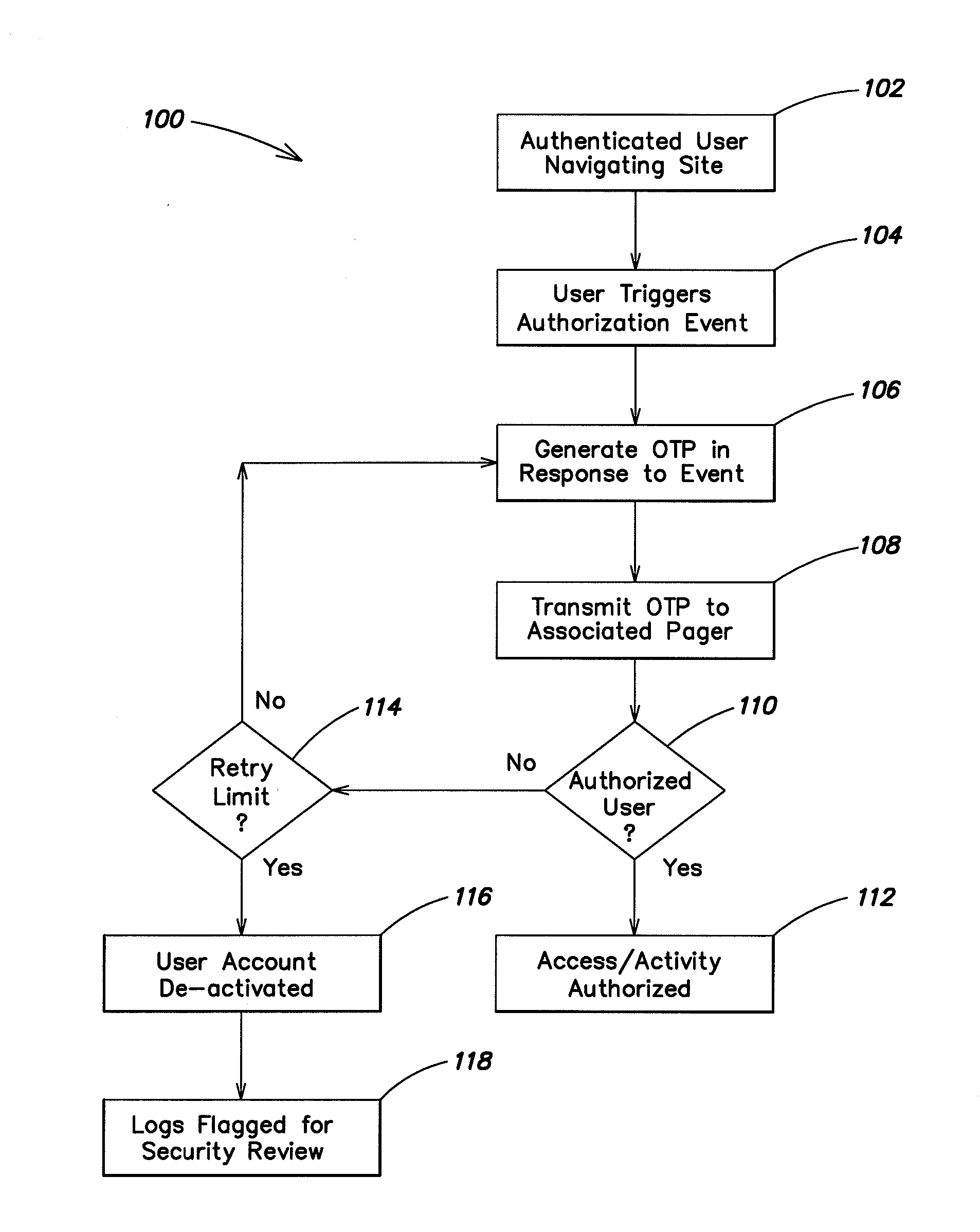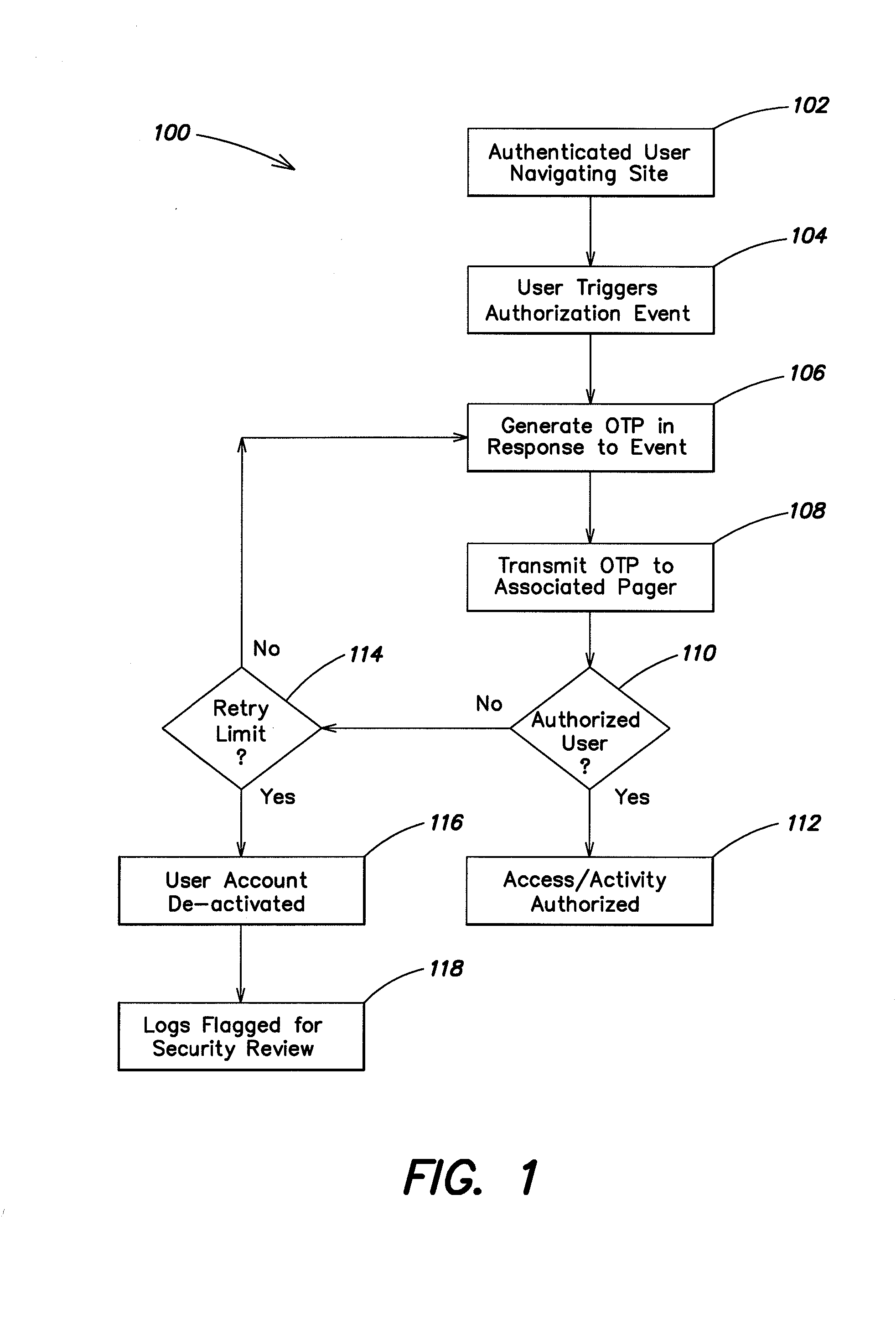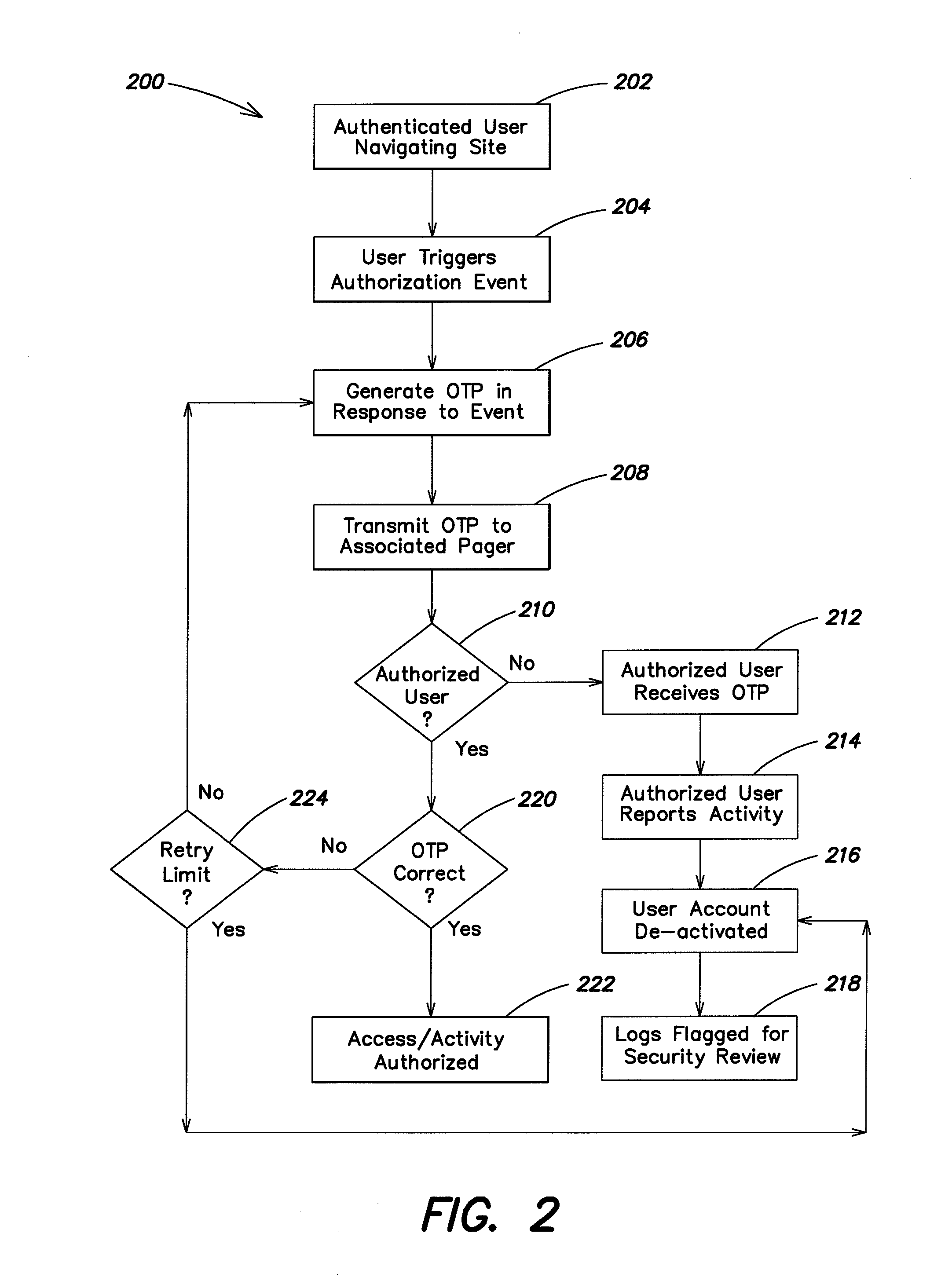Method and system for user authentication using event triggered authorization events
a user authentication and event technology, applied in the field of user authentication using event triggered authorization events, can solve the problems of revocation of compromised user accounts, doctor liability, etc., and achieve the effect of minimizing the impact of compromised authentication information and increasing sensitivity
- Summary
- Abstract
- Description
- Claims
- Application Information
AI Technical Summary
Benefits of technology
Problems solved by technology
Method used
Image
Examples
Embodiment Construction
[0042]According to one aspect of the invention, events trigger authentication requests for a user during the course of a computer session. In one example an event trigger may occur as a user navigates through a web interface. Typically, a user must authenticate him or herself to enter a secure site. During the course of navigation through the secure site authentication events are triggered. For example the user may wish to perform some action associated with the secure site or provide comment on information obtained from the secure site. The act of submitting or taking an action may be the triggering event. In response to an event triggered authorization request, a system related to the secure site will generate authentication information, in one example as a one-time password (OTP) that is transmitted to the already authenticated user. The hardware / software necessary to accomplish the generation of a secure OTP resides with the provider hosting the secure site, although one should ...
PUM
 Login to View More
Login to View More Abstract
Description
Claims
Application Information
 Login to View More
Login to View More - R&D
- Intellectual Property
- Life Sciences
- Materials
- Tech Scout
- Unparalleled Data Quality
- Higher Quality Content
- 60% Fewer Hallucinations
Browse by: Latest US Patents, China's latest patents, Technical Efficacy Thesaurus, Application Domain, Technology Topic, Popular Technical Reports.
© 2025 PatSnap. All rights reserved.Legal|Privacy policy|Modern Slavery Act Transparency Statement|Sitemap|About US| Contact US: help@patsnap.com



